American tanks of the First World War
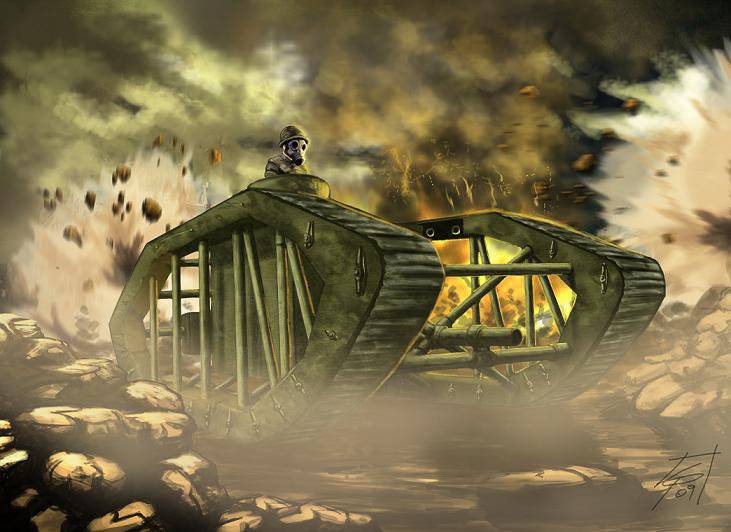
There is a generally accepted opinion that a tank as a combat unit was born as a means of overcoming the prolonged "trench" crisis in the First World War. The armed armored car really turned the tide, but its concept was invented long before the big war. Somewhere in 1904, the first copies of self-propelled artillery platforms appeared in the UK. Machines were designed to act as a mobile reinforcement, able to move and cross-country. An ideal starting point for the British was an agricultural tractor with a tracked chassis and a more powerful engine than cars. At the same time, turning the tractor into a combat vehicle was strained, which did not prevent them from being used at the front as ordinary tractors. The American firm Holt (the progenitor of Caterpillar) bought a patent for production and began to supply the British army with these very tractors. Meanwhile, the concept of a new weapons leisurely vytysyvatsya in the crucible of protracted battles.
When the US Expeditionary Army arrived in Europe, it did not have its own tanks. Why, there were none in all of America. The first serial armored car company Armored Motor Car Company made only by 1915, and at the time of entry into the war in the United States, only one 1st squadron of machine-gun armored vehicles, consisting of eight pieces of equipment, was part of the U.S. Marine Corps. Having a completely standard layout for that time, this machine is noteworthy in that it could be disassembled into modules and transported by boats. Well, for the marines they did it all the same.
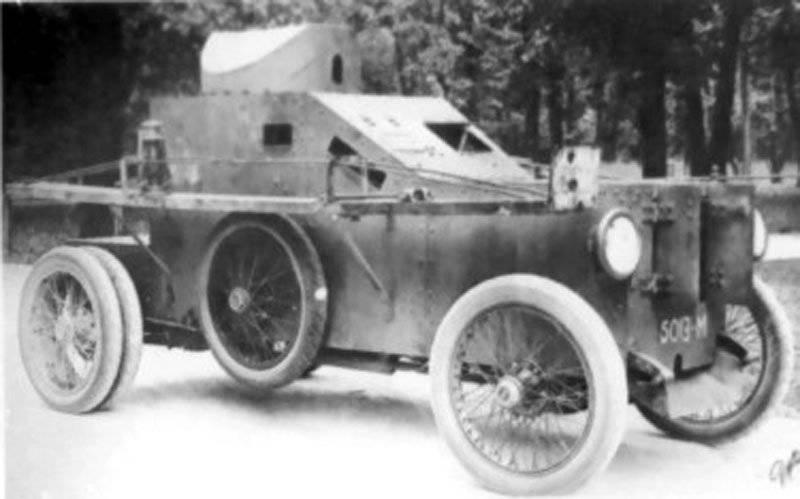
The first serial King Armored Car
The expedition commander, General John Pershing, was offered to take a couple of copies with him, but he refused. In the very first battle of Cambrai, seeing the British tanks in action, Pershing was impressed, appreciated the potential sufficiently and appointed Colonel George Patton to lead the formation of the American tank corps. By September, the 1918 body was ready. A total of 8 heavy battalions with Mark VI British tanks in service and 21 light tanks using the French Renault FT-17 were created. Only 4 of them participated in the battles. During its presence, the expeditionary forces used only foreign equipment. Native, American, and not delivered. Although intensive research was already conducted in the States, tests were made, mistakes were made and, in general, our own tank building school was formed.
I propose to get acquainted with what they did or did not succeed. This article covers the period to 1918 of the year, inclusive, that is, the most dawn of design ideas, when the engineers were not frightened and didn’t really know how it would be more correct, and the machines that were built at least in one copy are mentioned.
The Holt 75 is a popular semi-tracked tractor of the time. That tractor decided to sheathe armor and get a tank. The design was supposed to be quite amusing, huge overhangs severely limited patency, and the tank itself looked more like a self-propelled hangar. Power Holtovsky four-cylinder engine was 75 forces, but it is on the flywheel, and before the drive shaft reached only 50. The 12 tractor weighed tons and, due to the lack of friction, was driven by a small wheel pushed forward on the frame. From the armament they planned to put one course gun of the caliber 75 mm, there were also two machine guns, two more machine guns in the stern and one in the rotating turret mounted above. Reservations are about 2-3 mm, and the approximate speed is 7-13 km / h. Further the prototype did not matter, and he did almost out of tin. Holt only participated in the whole process by taking a tractor from him.
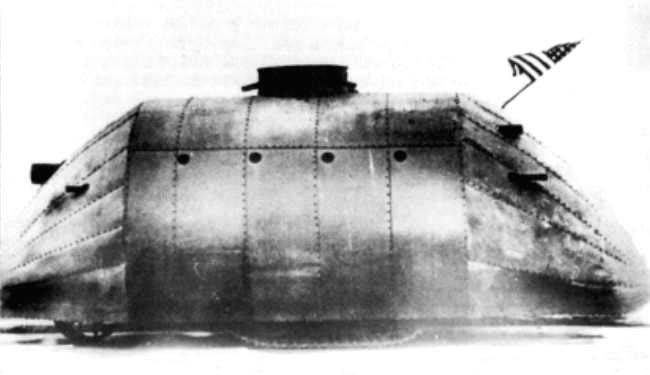
There is some confusion with the tractors themselves. It was the time of the emergence of Caterpillar, but the word “caterpiller” was translated and translated as “caterpillar”, therefore it is found in this and in another sense. In any case, the engines definitely stood "Holt".
The three-wheeled steam tank is no longer based on a Holtovsky serial tractor, but built and developed by Holt. Steam, by the way, is not on wood, but on kerosene, with two two-cylinder engines with an 75 horsepower. each. He had to move backwards along the battlefield, although, as far as I know, the steam engine didn’t care where to push, so the ride efficiency did not suffer from this. It began to develop in 1916, but the tank was ready only for 1918. The set of weapons included exchange rate 75-mm howitzer and Browning machine guns of 0.30 caliber in the amount of 2 to 6 (according to various sources). Interesting booking, its thickness was impressive at that time 16 mm and only feed, bottom and roof - 6 mm.
History cars similar to the famous tank Lebedenko. When in the winter of 1918, the US military began testing at the site in Aberdeen, this fruit of ingenious design thought drove 15 meters and "loading." 75 horses on each wheel was not enough, I had to take a tracked drive. Potsokav languages, CSKA refused to further work on the project.
The same Holt 75 1909 tractor of birth, only produced under license by Best, is therefore called Best 75 Tracklayer. And here the definition of trekleera interpreted just as a tracked course. Here Best and created their own design, as they saw it. A bulky hull with weapon layouts placed somewhere in the area of the steering wheel and a superstructure aft. The model turned out to be unviable, and the military, again clucking their tongues, politely refused. Well, you can't make a good tank out of a tractor.
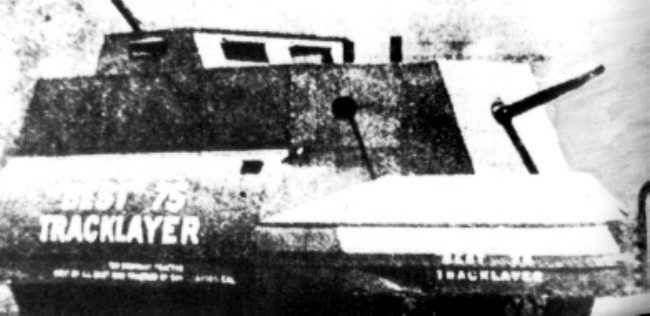
Not stopping on the first failure, the engineers at Best decided that the whole problem was in the layout and transferred the armament to the tower located aft. Now there, apart from the driver, there were two cannons and a few holes for machine guns. Also, the hull shape was changed, and the model of the tank began to look very stylish. Then they did not know the word steampunk, but when the military again refused, propagandists seized the car. If a tank cannot be used for its intended purpose, but at the same time it looks menacing and beautiful, then why not use it for promotional purposes? Based on these reflections, CLB 75 managed to work as a model to demonstrate the power of the US military. There was a series of photos and even postcards on which he was present. After the war, the prototype was gone. Most likely, was dismantled for scrap.
Another Holtovskaya attempt to make a cool tank. All the same. Tractor Holt, covered with armored hull. Only the engine this time was the power of the 150 HP. G-9 resembled a mobile dugout. He had five loopholes on board and one in the stern. The guns were located in the towers and one at the stern, and there are two known variants of the tank layout: single and double turbo.
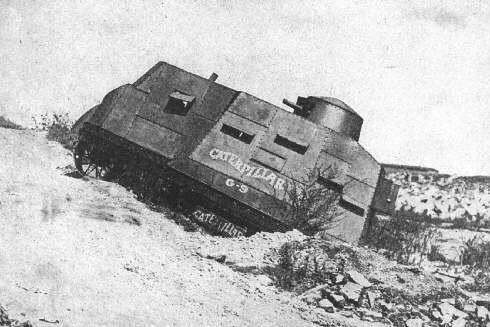
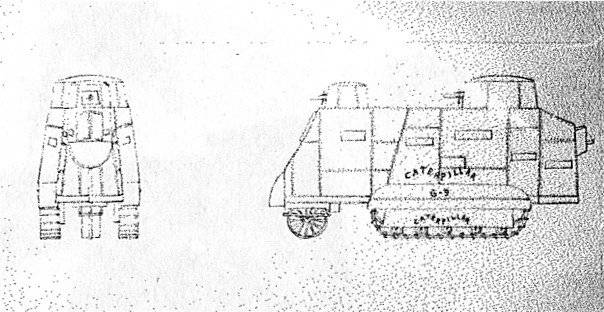
Testing machines at the site near Los Angeles once again showed the failure of the design. The speed of the tank, even in a straight line, did not exceed 5 km / h, and there was not even talk of cross-talk. Not without incident. At some point, the driver lost control of the “tanker” and huddled the car into a ditch, which resulted in the destruction of the hull. The statute of clattering with tongues and finally realizing the failure of an agricultural tractor as a chassis for a combat vehicle, the military gave up and left home.
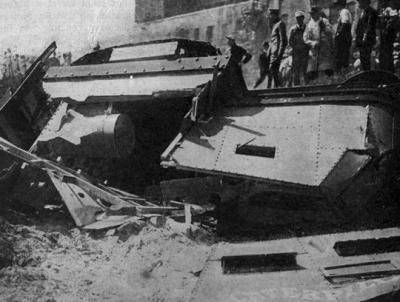
This time, the Holtovtsy took the task quite seriously and built the tank, not the armored vehicle. The steering wheel was abolished, and the tracked chassis was significantly reworked. The benzoelectric (gas is a gasoline) circuit was used forcedly. There were no clutches, so they put their own electric motor on each track so that they could be controlled, and the 90-strong motor was combined with the generator. Although the tank successfully turned, such a scheme of drives has over-complicated the design, it warmed up badly and often failed. But the idea itself, probably peeped by the French, was interesting. The body was an ordinary armored box with a sheet thickness from 6 to 15 mm. For a better cooling in the stern they put a folding sheet, but no one would keep it open in battle. The armament of the tank consisted of two Browning 0.30 machine guns mounted on the sides, and a Vickers 75 mm cannon placed in the front hull plate.

Tests have shown that 90 hp (This is without taking into account transmission losses) for the 25-ton car is clearly not enough. From further refinement of the project refused.
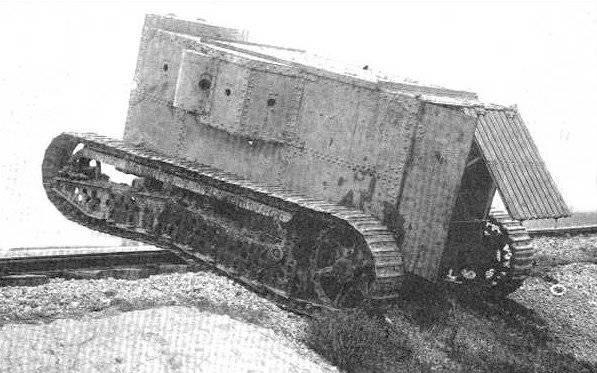
The first case when army engineers directly joined in the matter. It is quite natural that the tank had a large lobby and was actively pushed through at all levels. The design was based on the British diamond Mark and, in principle, the car turned out to be similar, but had two characteristic differences.
Due to the fact that gasoline and diesel engines were in the embryonic stage, preference was given to waste steam power plants operating on kerosene. By that time, the development of steam propulsion was, if not at its peak, then at a very high altitude, and such an engine could easily compete with internal combustion systems. It is enough that the total power of twin twin-cylinder steam engines reached the 500 hp. Each engine had a drive to its drive wheel, and the tank was controlled by a simple "right gas - left gas."
The second interesting feature was weapons. Instead of a cannon, a flamethrower was chosen as the main one. Probably, this tank became one of (if not the first) flamethrower. In the design of the “main caliber”, instead of using compressed gas cylinders, a separate gasoline engine with an 35 horsepower, which created pressure around 110 atm, was used to eject fire mixture. and allowed to charge a charge to a distance of 27 meters. Additionally, the onboard sponsons installed Browning machine gun 4. The crew consisted of 8 people, booking - 15 mm, combat weight - 45 t.
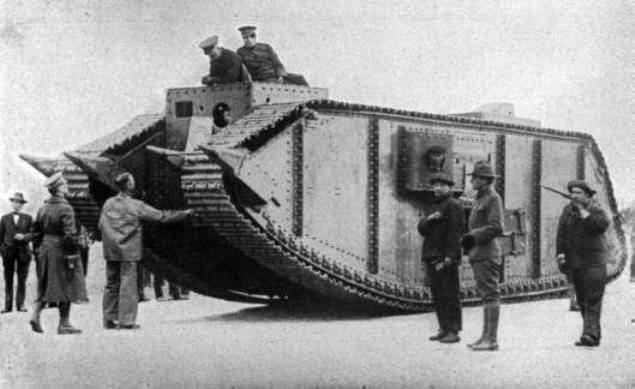
The first public presentation was held on 17 on April 1918 of the year at the parade in Boston and everything would be fine, but the tank had broken down. The cause of failure was the unreliability of the power plant. After the repair, the car was loaded onto a steamer and sent to Europe for testing, but he did not even reach the battlefield. Just afraid to send. In the future, work on the project turned and the final fate of the prototype is unknown.
Without a doubt, one of the most interesting "military" American tank projects. Carefully analyzing the practice of applying British marks on the battlefield, the designers came to the conclusion that although the large linear dimensions and allow to overcome the huge trenches with craters, they also contribute to a significant increase in the area of destruction, as well as an increase in mass. Engineers proposed to move the chassis into a separate structure, and place the engine and crew in the middle of a small box suspended between the tracks. The idea, of course, sound, but to bring it to a logical end did not work.
The first prototype was significantly lighter than the principle, had less weight, greater thrust-to-weight ratio and maneuverability, but at the same time it had a number of its own design flaws. Such as: a separate transmission unit, weak weaponry and an excessively “shaky” chassis. “Children's” design diseases could be cured, but the war was over, and the military lost interest in the prototype, preferring their own version of the French FT-17. The prototype of the skeleton tank, fortunately, has been preserved and is now stored in the Aberdeen Tank Museum.
Seeing the success of the French with their Renault FT-17, Uncle Ford also wanted this for himself. The first works on a light tank began in the 1917 year, and the first prototype was ready by the middle of 1918. The car came out similar to its ideological mastermind both in layout and in chassis design. The only principal difference was the absence of the turret, and the 37mm gun and machine gun were located in the front hull plate. The forehead reservation is 13, and the sides of the 10 mm. Engines stood as much as two, but the automobile, 45 horsepower. each. The goal was maximum unification with the cars of the brand, to subsequently produce new tanks in the thousands. And the government order for 15 thousands made, only the war ended in time.
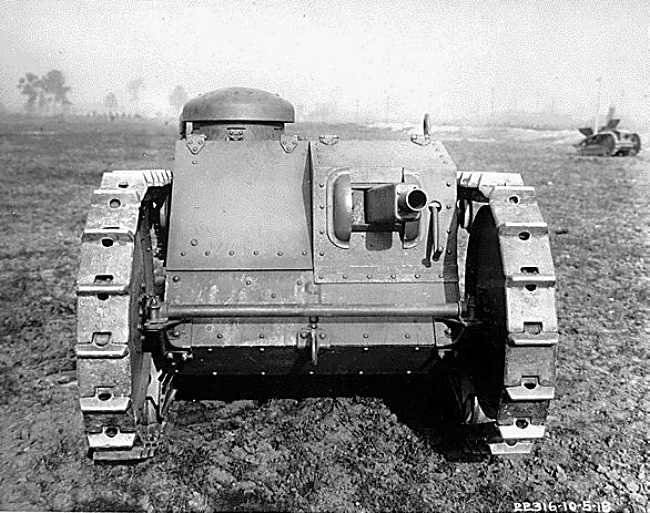
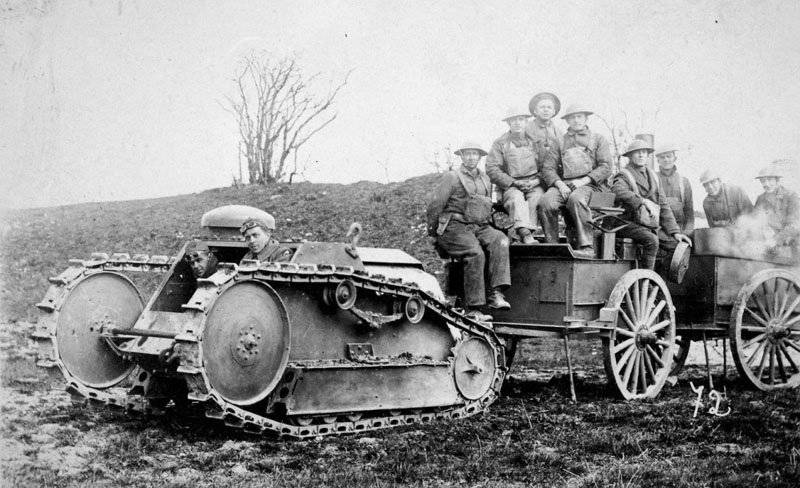
It is quite natural that the car did not have time to take part in the hostilities. By 11 September 1918 produced only 15 copies, of which 10 went to the troops, where they quickly proved their insecurity and poor permeability. By the middle of the 20's, they were written off and replaced with the M1917.
When they finally decided on the shortcomings of the Ford light tank, the military ordered a new car in which these missteps were to be fixed. The mass of the new tank has increased to 7,5 t, but he got a rotating turret with the same set of weapons (37-mm cannon and machine gun) and more powerful (according to 60 hp) twin engines. Reservations remained the same. In connection with the end of the war, project work was curtailed, and preference was given to a more successful "American Renault".
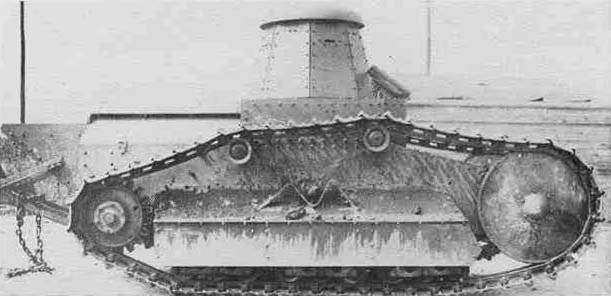
It is also a very interesting machine, which includes several advanced solutions and is quite capable of becoming the first serial own American development. The first works on it began in December 1915 at the Oakland Motor Car Company under the leadership of chief designer Hamilton. Even then, for the new tank developed their own tracked chassis, moving away from the usual practice of using the tractor. The chassis turned out successful and fairly reliable. The undercarriage was protected by onboard armor plates (!), And the frontal part and the commander's turret were installed at angles, which at that time was also a very advanced solution. Placing the main armament (gun 37 mm or machine gun) was planned in the front hull plate. At the end of the 1917, the prototype was put to the test, but it was simply “crushed” because of the competition with the Ford 3-ton and the successful French FT-17. Because of the futility of further work on the machine were discontinued.
The famous American firm Studebaker, which already in the first world specialized in the production of trucks, offered its own version of an armored vehicle. This "tank" was originally planned exclusively as an armored cargo, but it turned out something similar to the British rhombic stamps, only lower and longer. Naturally, this platform was tried to work as a tank one, but nothing good came of both options. Tracked armored Studebaker remained in a single prototype.
According to the glorious tradition, the license for the French Renault FT-17 was bought by all and sundry, the tank was very good. So in the United States, having seen the prospect of profit (and the French production facilities could not provide everyone), they quickly bought documentation and promised to make a whole bunch of tanks in a short time, to distribute everything to themselves. The production process naturally encountered a bunch of problems, starting from the incompatibility of metric drawings with inches, the industry’s unwillingness to make a number of knots, well, and the commonplace “cut and roll” significantly delayed the time of triumph. Serial production was established only by the fall of 1918, when the war was nearing the final, the warring powers planned to cut military budgets, and no one needed tanks except the United States. Since no one needs it, and the money is invested, they began to make for themselves. In total, 950 units were made, of which: 526 with Browning machine guns, 374 with Vickers 37 mm cannons and 50 communication machines (TSF). Tanks structurally almost did not differ from the prototype, with the exception of a few minor details. In the fighting, the participation of "American Renault" did not take.
Joint American-Anglo-French development. In fact, from the American there were only Liberty engine, undercarriage elements, transmissions and electrical equipment. The tank was supposed to be quite successful in itself, for example, it was the first to use an overpressure system to protect the crew from WMD. Also, the armament deployment scheme was made according to the most rational scheme, and the elongated body allowed overcoming trenches up to 5,5 meters in length. The engine was separated from the crew compartment to protect the crews. To build the planned construction of a factory in 200 miles from Paris. But, as often happens with joint projects, the war ended faster than expected and the interest in working together instantly died away. Of the ready-made kits from 1919 to 1920, the USA built around 100 tanks that did not take part in the hostilities and were transferred to Canada as training facilities by the beginning of World War II.
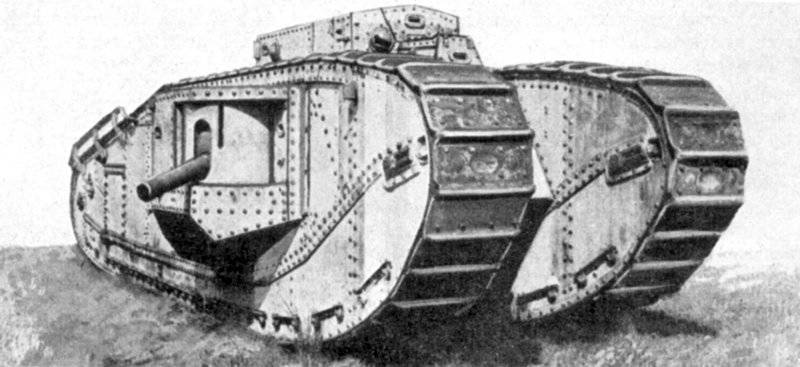
Actually, on this variety of American tanks, designed during the First World War, has exhausted itself. One can only mention the unrealized and unrealistic ideas of the 200-ton crawler "Trench Destroyer" with a crew of 30 people and Holtov 150-ton field monitor on a wheel track, armed with 152 mm guns. But these projects are more akin to the German Ratte, just as senseless and stupid.
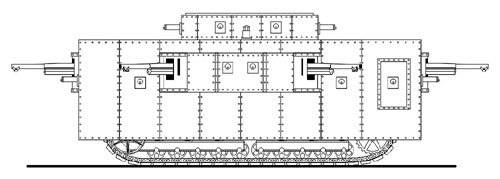
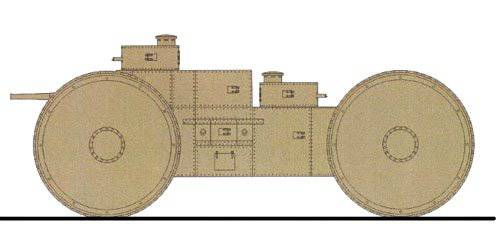
Materials used:
http://www.history-of-american-wars.com/world-war-1-tanks.html#gallery[pageGallery]/0/
http://en.wikipedia.org/wiki/Tank_Corps_of_the_American_Expeditionary_Force
http://www.aviarmor.net/tww2/tanks/usa/_usa.htm
http://alternathistory.org.ua/taxonomy/term/114
http://www.militaryfactory.com/armor/ww1-us-tanks.asp
https://ru.wikipedia.org/wiki/Mark_VIII
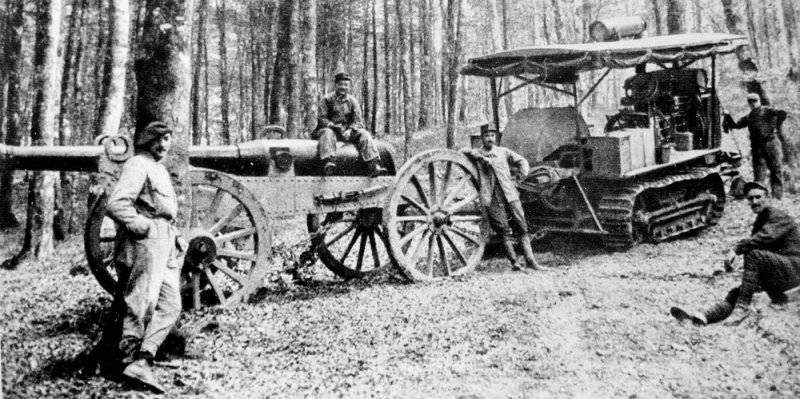
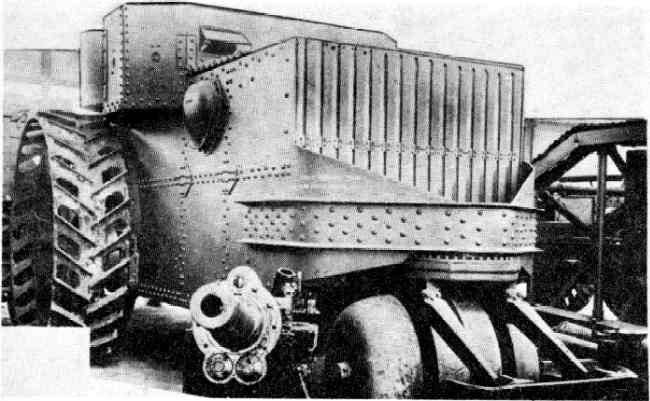
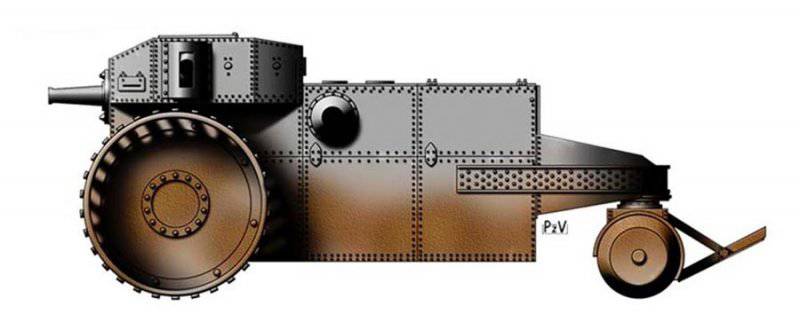
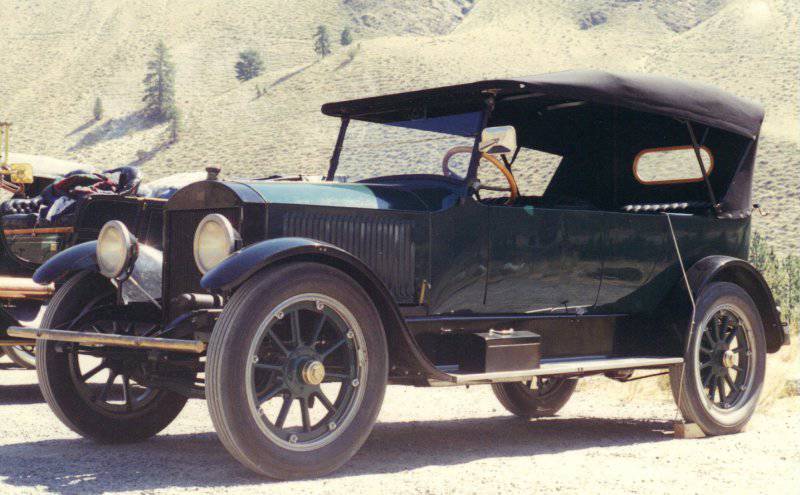
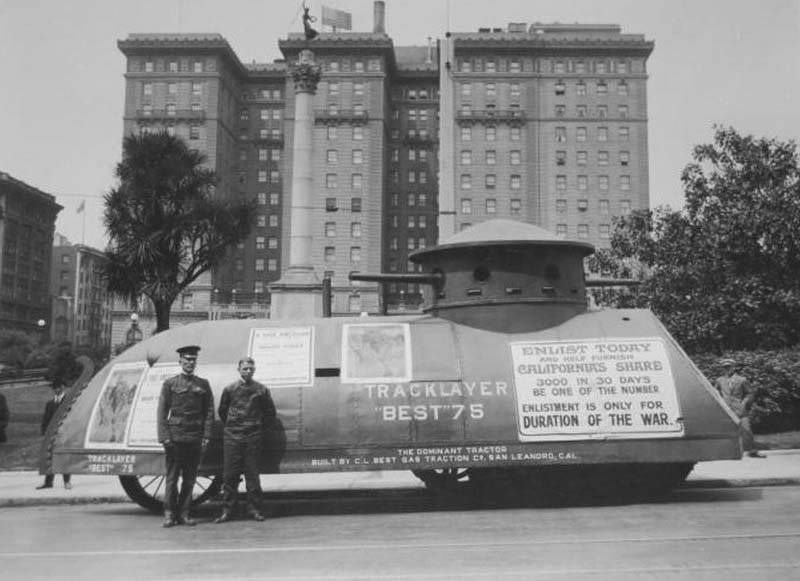
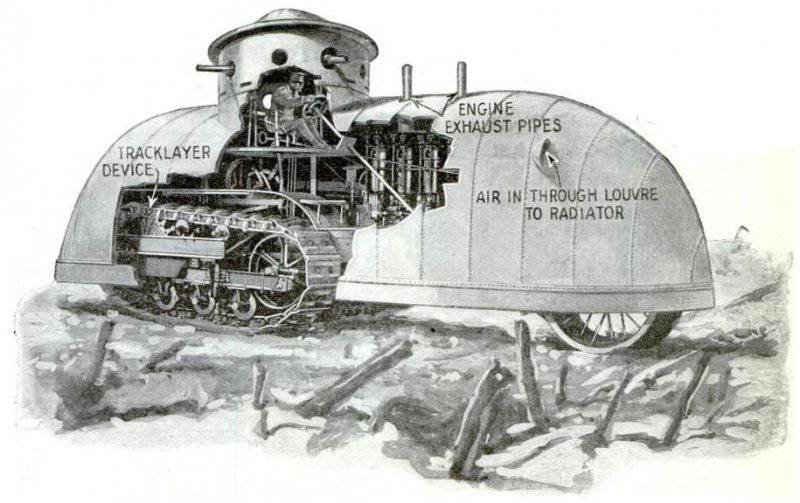
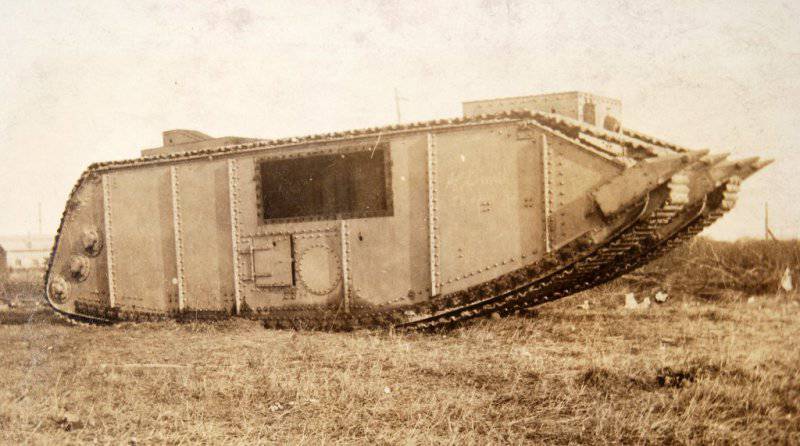
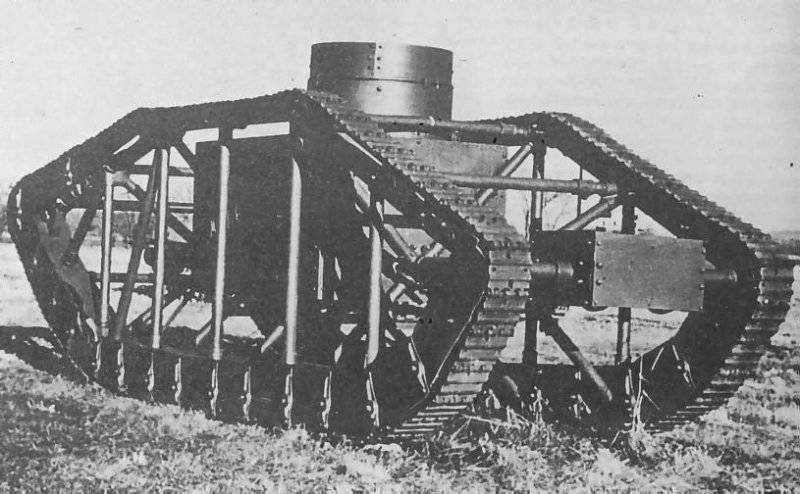
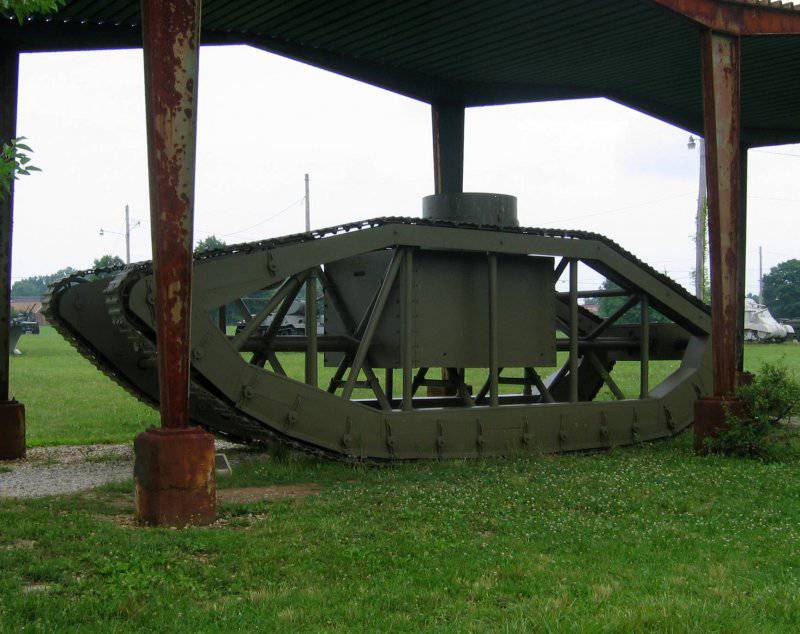
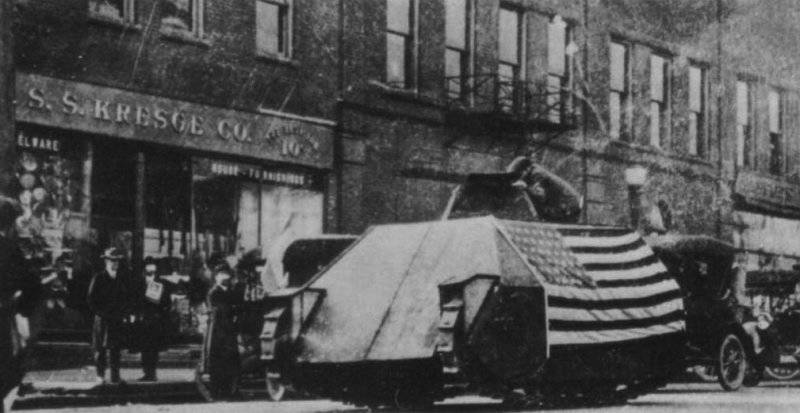
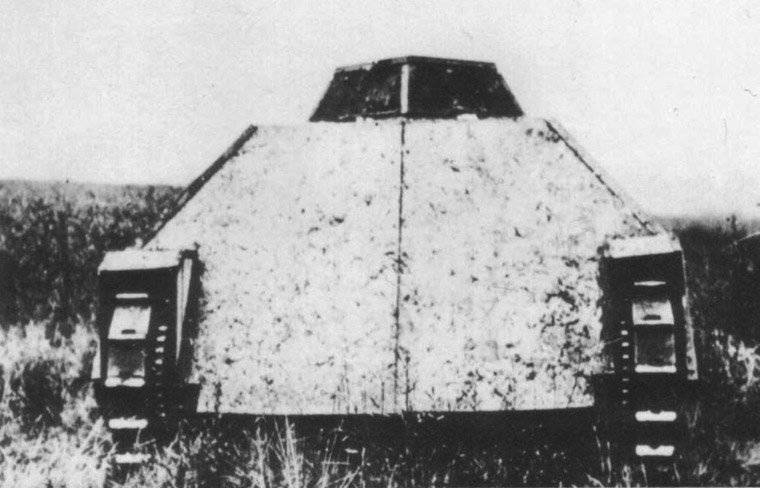
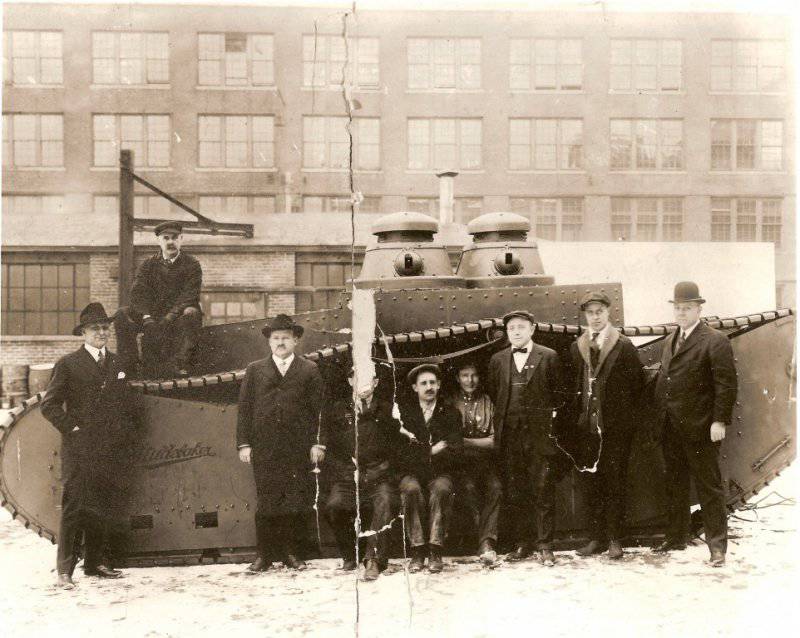
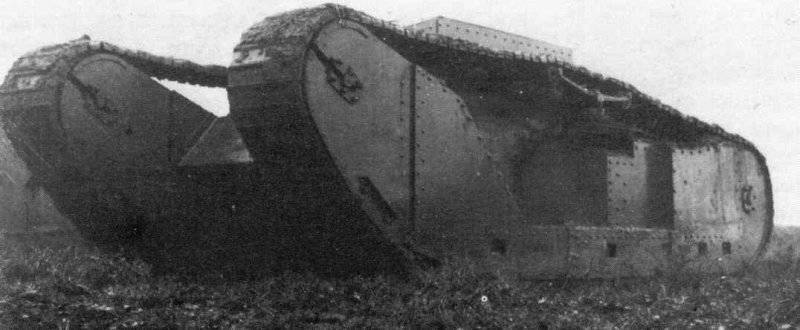
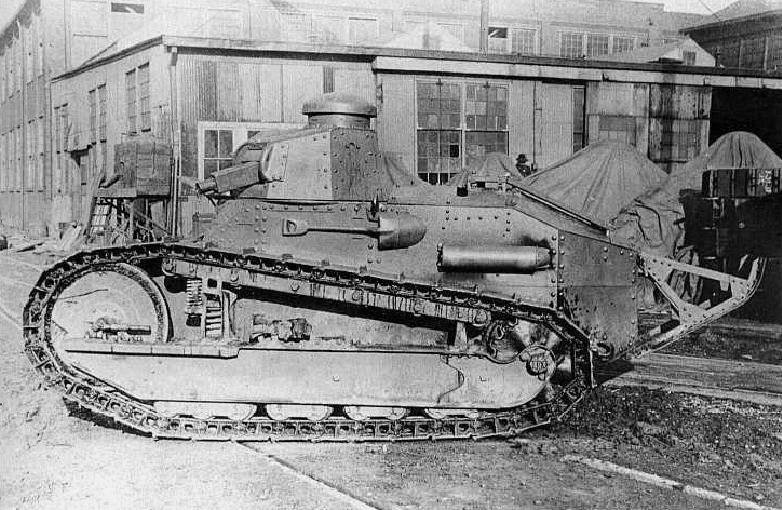
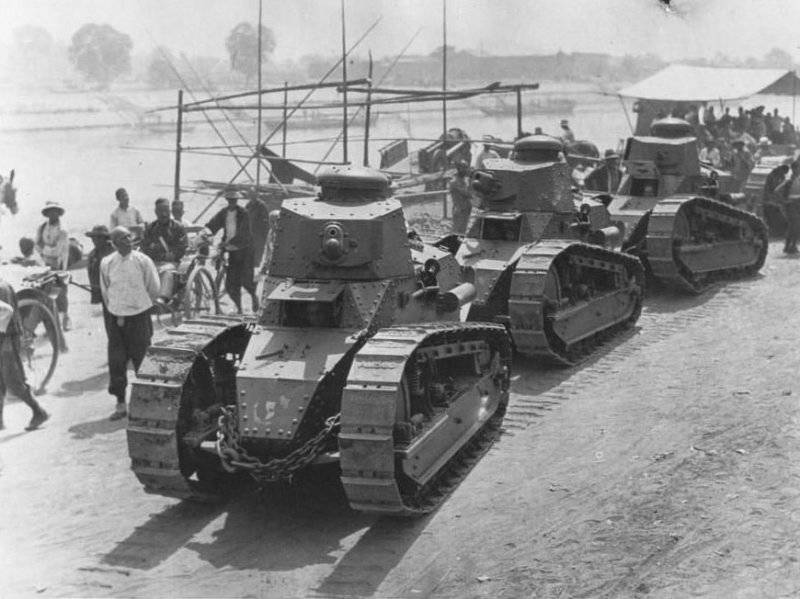
Information